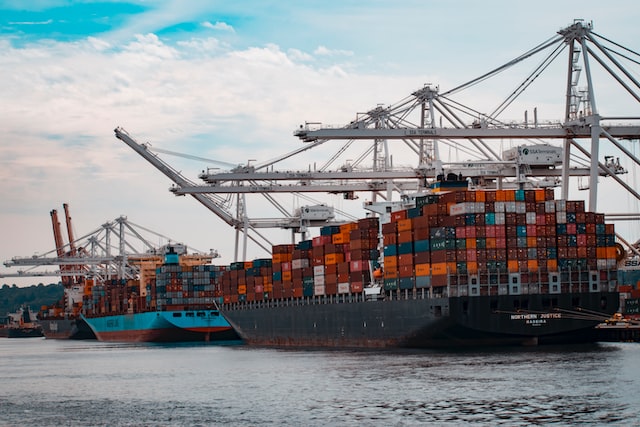Commentary from Glenn Koepke, GM of Network Collaboration at FourKites
Do you expect shipping trends around Lunar New Year to be different this year than in years past? How?

We anticipate volume will sharply halt during the Lunar New Year while ports shut down and operations come to a standstill. Coming out of the Lunar New Year in February, we will see a climb back to steady volumes.
Volumes will remain moderate through the end of Q1, with steamship lines looking to maximize vessel utilization and optimize sailings. As these adjustments occur, transit time and dwell will adjust. However, we don’t anticipate these to be major showstoppers. The net of this is that the biggest disruption lurking is any further impacts from COVID, but other than that, market conditions will remain soft.

In December, Chinese exports to the United States fell 19.5% from a year earlier to $301.1 billion and exports to the 27-nation European Union tumbled 39.5% to $43.6 billion – how do you see weaker demand, ongoing COVID waves and mounting geopolitical tensions impacting supply chain activity in/out of China in 2023?
The China strategy varies greatly by company and industry. Several companies in healthcare have looked to a walled-off China strategy where local Chinese suppliers supply the Chinese business.
Meanwhile, suppliers in Southeast Asia and elsewhere will remain part of their global supply chain. Export volume will remain significantly lower year-over-year as the global economy remains soft; this will ease a lot of the pressures we have historically seen in China and elsewhere. COVID and lockdowns will continue in China, which will cause temporary disruptions. However, with a softer air freight market, being able to expedite product out will be much more feasible for shippers and forwarders. Ultimately, companies sourcing product from China and elsewhere in the world must remain vigilant and monitor potential disruptions, the financial stability of their logistics service providers and maintain a level of safety stock for critical products to withstand these issues when they do occur.
Analysis:
- FourKites has seen volumes at Chinese ports remain relatively consistent over the past month, though still down from highs seen in summer 2022.
- As of January 6, the 28-day average ocean shipment volume at the Port of Shanghai is down 2% month-over-month. At the Port of Shenzhen, port volume is down 6% month-over-month and at Ningbo-Zhoushan, volume is down 2% month-over-month. At Hong Kong, volume is up 1% month-over-month.
- As of January, the 14-day average shipment volume for loads traveling from China to the U.S. is down 41% compared to the recent peaks seen in September and down 13% month-over-month.
- The percent of delayed shipments from China to the U.S. is now at 34%, down from the peak of 48% seen in early October of last year.
- Transit times for ocean loads traveling from China to the U.S. are now 40.3 days for the entire ocean journey, a 20% decline month-over-month.
- Dwell time at Chinese ports has ticked up slightly over the past month. For export shipments at Chinese ports, the 28-day average ocean dwell time is now at 5.5 days, an increase of 15% month-over-month. For import shipments, the 28-day average ocean dwell time is at 4.4 days, up 10% month-over-month. However, these times are consistent with what FourKites has seen around Lunar New Year the past two years.



